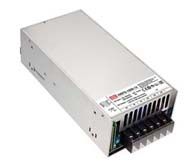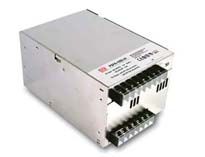
When selecting a power supply for your electronic device, it's imperative to consider the PSU efficiency ratings. Not all power supplies are the same - some may be more effective than others in supplying voltage and current to keep your device running optimally.
So, what is efficiency rating in power supply? A power supply efficiency rating determines how much of the electricity drawn from the house electrical AC or DC is actually converted into usable power for your device.
This comprehensive guide will give you insight into efficiency ratings on power supplies. We'll explain significance, review common power supply ratings, and teach you how to calculate their efficiency. Furthermore, we have tips to enhance your own hardware's performance as well.
Whether you're someone who likes a DIY project or an experienced technician - this guide has something for all levels of technical expertise when it comes to understanding PSU efficiency ratings.
Oh, and if you’re looking for a high efficiency power supply, look no further. Bravo Electro has you covered with the best selection of AC DC power supply or DC DC converters online from trusted manufacturers like MEAN WELL.
Power Supply Efficiency Rating Chart
| Efficiency Rating (%) | Wattage Output | Power Draw (kW) | Cost of Operation (USD/month) |
|---|---|---|---|
| 60% | 500W | 0.833 kW | $60.00 |
| 75% | 500W | 0.667 kW | $48.00 |
| 80% | 500W | 0.625 kW | $45.00 |
| 90% | 500W | 0.556 kW | $40.00 |
Note: Costs are calculated based on an average electricity rate of $0.10 per kWh, operating 24 hours a day for 30 days.
What is Efficiency Rating in Power Supply?
So, what is efficiency rating in power supply? How are power supplies rated from an efficiency perspective? It’s a ratio indicating how much of the power coming from the AC or DC source is usable for your device - with 80% being an excellent benchmark.
The other 20%, unfortunately, dissipates as heat and isn't available for powering up electronic components. This is wasted energy that you’re still paying for, which is why a high-efficiency power supply is well worth the investment.
PSU efficiency ratings matter when it comes to your device's performance and life span as well. Sub-standard efficiency can increase energy use, elevate heat output, and limit the longevity of your machine.
However, if you opt for a higher level of efficiency with your power supply unit - electricity costs will be reduced while thermal levels are minimized thus leading to greater lifespan potential.
It's important to note that the efficiency rating of a power supply can vary depending on several factors, such as its load, power supply voltage, and temperature. The power supply efficiency rating can also be affected by the type of power supply, such as AC vs DC power supply or modular power supply.
Why PSU Efficiency Ratings Matter
So why are PSU efficiency ratings so important in the first place? Power supply efficiency ratings impact energy consumption and operating costs. An inefficient power source will lead to high electricity bills, increased heat dissipation, and the possibility of system breakdowns.
Moreover, an inefficient power supply can negatively impact system performance, causing voltage drops and instability.
In contrast, a high-efficiency power supply can save energy and reduce operating costs, making it an ideal choice for both residential and commercial use. It ensures that the system components receive the required power to operate efficiently and effectively.
So, what is efficiency rating in power supply calculated by?
How Do You Calculate Power Supply Efficiency Ratings?
The efficiency of power supplies is one of the most important power supply specs to pay attention to. Metering must be precise to accurately assess the rating. We recommend using precision wattmeters or power analyzers to measure input and output powers for a reliable calculation.
Proper cabling and the correct voltage must be measured for successful measurements too, though. An electronic AC source should be used for taking AC measurements to avoid any mistakes.
Additionally, EMC interference from the device being tested and electromagnetic noise in its surrounding environment need to be taken into consideration as well.
This is why we suggest you measure the performance of your device over a range of temperatures and operating times to get the most accurate rating of efficiency. Temperature changes as well as duration are essential elements to consider when evaluating overall effectiveness.
If you're looking for improved efficiency, make the switch to a high-efficiency model with an 80% or higher rating. Additionally, opting for a modular design is beneficial since it reduces cable clutter and further minimizes energy loss while powering your system.
What is the Best Power Supply Efficiency Rating?
To guarantee the safe, reliable operation of power supplies, the Environmental Protection Agency (EPA) and Department of Energy (DOE) provide strict efficiency ratings which must be met before any product can be released to consumers.
This ensures that all products meet a baseline standard for energy conservation. So what is the typical efficiency rating for a power supply? The typical efficiency rating for a power supply depends on the type of power supply and its intended use.
Standard models have PSU efficiency ratings between 60% to 75%, while high-efficiency power supplies have ratings of 80% or higher. The efficiency rating of a power supply is expressed as a percentage and measures the ratio of output power to input power.
When it comes to selecting the best power supply efficiency rating, your specific needs must be taken into consideration. If you are using a power supply for home or office use, then an 80% efficiency rating is more than enough to save electricity and cut down on operational costs.
On the other hand, if you require something with higher performance such as servers or data centers, then PSU efficiency ratings of 90% or above will ensure maximum output and energy savings.
It's also important to consider other factors such as power supply voltage, UL listed vs UL recognized certification, and manufacturer reputation when selecting a power supply since these factors can have a major impact on the power supply’s efficiency, safety, and reliability.
To elaborate, UL-listed products are the gold standard for safety certification, while UL-recognized products are typically only certified for one aspect such as flammability. Our blog has more resources on power supply standards and power supply certification.
Additionally, opting for a modular design is beneficial since it reduces cable clutter and further minimizes energy loss while powering your system. In the meantime, let’s share some tips on how to fix power supply inefficiencies.
How to Improve Power Supply Efficiency
While the PSU efficiency ratings are going to be the biggest determinant of operating costs and longevity, there are plenty of ways to improve power supply efficiency. Here are some tips:
- Keep the Power Supply Clean: Dust buildup inside and around a power supply can block airflow, causing it to overheat and operate inefficiently. Use compressed air to clean the unit regularly, focusing on vents and fans. Keep the area around the PSU clean and free of obstructions for optimal airflow.
- Maintain Optimal Ambient Temperature: Heat is one of the leading causes of power supply inefficiency. Proper power supply installation goes a long way. Position the unit in a well-ventilated area away from heat-generating equipment. Use fans or air conditioning as needed to prevent excessive temperatures.
- Inspect and Optimize Connections: Loose or damaged cables can create resistance, wasting energy and reducing efficiency. Check connections regularly and replace worn or frayed cables immediately.
- Monitor Load Management: Overloading or underutilizing a power supply can impact its performance, so make sure the power supply’s capacity aligns with the connected load. Use a wattmeter to confirm that the power draw stays within the unit's recommended range.
If you're experiencing bad power supply symptoms, such as random shutdowns or restarts, it could be a sign that your power supply is not functioning efficiently. To troubleshoot power supply issues, start by checking the connections and confirm everything is plugged in.
Power supplies are typically built to provide up to 10 years of service; however, this power supply lifespan could differ depending on its usage and surrounding conditions. Moreover, the lifespan of these devices may vary from 5-10 years in general - so it's best not to wait until problems arise.
Don't forget that if an upgrade is needed for superior results; investing in a high efficiency power supply has been proven to make considerable differences when it comes to emissions and output. Your search ends here at Bravo Electro.
Find High-Efficiency Power Supply Models at Bravo Electro!
So who makes the best power supplies?
At Bravo Electro, we only partner with the best of the best manufacturers to bring you high-quality and reliable power supply units. Our selection includes 12 volt DC power supplies, 24 volt DC power supplies, and 48 volt DC power supplies.
We understand that each application has specific power requirements, and we offer a wide range of options to meet your needs. We have enclosed power supplies, open frame power supplies, DIN rail power supplies, modular power supplies, rack mount power supplies, and all the other power supply types you could need.
Our committed team of experts is here to offer you exceptional customer service and support. We will helpfully lead the way when it comes to selecting the right power supply for your needs, as well as aiding with any queries that may arise. You can rest assured in knowing Bravo Electro has all your energy output requirements sorted!
If high efficiency is what you're after, then look no further – our selection of power supplies offers some of the most efficient models on the market today; their efficiency ratings are nothing short of revolutionary compared to industry standards.
Wrapping Up Our Power Supply Efficiency Rating Guide
As we draw to the end of this guide on PSU efficiency ratings, you are now well-educated and knowledgeable in the evaluation of a power supply efficiency rating. Being able to measure and analyze efficiency is essential when it comes time to select your ideal unit for whatever setup requirements you have.
Our blog has additional resources on topics like power supply wattage, how to convert DC to AC power supply, switching vs linear power supply, unregulated vs regulated power supply, what is the advantage of having a redundant power supply, power supply topologies, NEMA vs IP ratings, how to use DC power supply, and more.
Remember, though, there’s no need to stress about all this on your own when world-class customer support is only a click or call away. Get in touch with the experts here at Bravo Electro and we’ll point you in the right direction towards high-efficiency power supply models from trusted brands.













